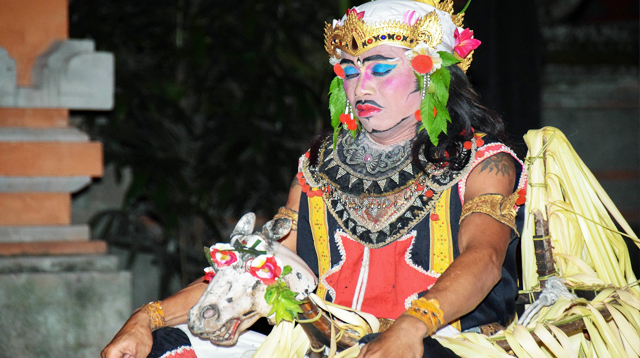- SANGHYANG Jaran Dance is one of the Balinese sacred dances performed in a series of religious ceremonies at temples.
- More dramatically, this dance also uses the property of fire to burn coconut fibers. At the time of trance, the fire is passed and kicked by the dancer.
The Hindu community in Bali has a series of sacred dances performed in relation to the implementation of religious ceremonies. One of them is the Sanghyang Jaran Dance (in Balinese, jaran means ’horse’). This is probably the most dramatic Balinese dance because it will pass through the fire while dancing.
This dance, which originated in pre-Hindu times, has a high spirituality and religiosity meaning for the supporting community. In general, this dance is performed to coincide with the catastrophe repellent ceremony at the full moon of sasih keenem (December) or during times of concern, for example, when a disease outbreak occurs or other events that disturb the public.
As is known, in that month the world has entered a transition period, where there is an extreme change of seasons, so many diseases and epidemics will cover the earth. In order to prevent the transmission of the diseases, Sanghyang Jaran is sent down or step on the ground to neutralize the earth which is psychically experiencing an unequal imbalance. This dance gives meaning to the spiritual communication of community members with the supernatural by singing worship songs.
The performance of the Sanghyang Jaran Dance is carried out through a series of complex ceremonies. Before the performance is carried out, usually the elders or customary leaders will offer a pooja to the temple to ask for permission and at the same time ask that the horse which is a sacred property in the temple is willing to be present for the stage. This dance has three important elements, namely fire, sanghyang songs and dancers.
The dancer who are usually chosen based on descent dances the property of a horse that is made to resemble a barong with a mask of horse head and ornaments on the neck and tail. But in his body, it only consists of a strong frame carried on the shoulder.
The dancer gets ready while closing his eyes around a fire like a bonfire with dry coconut fiber fuel and placed in the middle of the arena. The horse dancer is also accompanied by a priest. While the accompaniment is vocal heard similar to the Kecak Dance a cappella that sings the song Sanghyang Jaran in Balinese. The longer the more solemn and serious they are. This is the stage that must be done before starting this dance.
At the climax, the dancer is possessed by the spirit of the horse and then kicks as well as passes through the fire so that the coals of coconut fiber seem scattered and dramatic. While walking around the dancer keeps his eyes closed, walking and jogging with bare feet. Then, he tramples on the coals of coconut fiber scattered in the middle of the arena.
These are tense moments because the dancer is in a trance. He no longer feels the heat of the fire and continuously dance through the fire. Meanwhile, residents continued to tidy up and collect the scattered coconut fiber embers. The dance continues.
Some regions stage this performance because it is considered a guide and organized for two days, namely, the day before the full moon and right on the full moon. In addition to the full moon in December, this sacred dance is also often performed under certain conditions, such as an epidemic in a village or hamlet and so on. This belongs to sacred dance because it requires a series of ceremonies to perform it.











